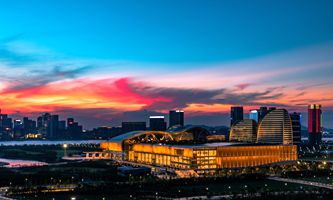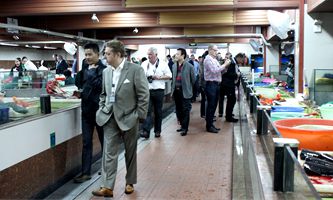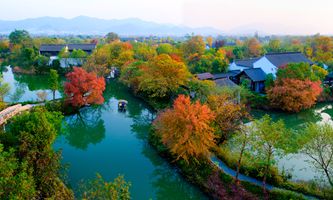Hangzhou Economic and Technological Development Area
Founded in 1990, Hangzhou Economic and Technological Development Area was approved as a state-level development zone by the State Council in April 1993. It is home to industrial parks, a university town and an export processing zone, and is one of the three sub-centers of Hangzhou, governing Xiasha and Baiyang sub-districts with a population of 450,000.
With more than 20 years’ of development, it has made significant progress and become an important industrial cluster and sub-center of the city, enjoying high ranking in term of comprehensive competitiveness among the national development zones for many years.
It has also won a group of honorable titles, such as “Best Development Zone for the Investment of Multinationals”, “National Eco-Industrial Demonstration Park”, “National Low Carbon Industrial Park”, “The Core Area of National High-tech Industrial Base for Biological Industry”, “National Intellectual Property Pilot Park” and “Demonstration Base for Innovation of Industry-University-Research Cooperation in China”.
In 2016, the area achieved a regional GDP of 58.95 billion yuan, up 5.3 percent year-on-year; the added value of enterprises above the designated size amounted to 40.42 billion yuan, up 2.3 percent; the added value of the service industry was 17.28 billion yuan, up 16.9 percent.
The total fiscal revenue reached 12.72 billion yuan, including 6.35 billion yuan in general public budget revenue, rising by 15.9 percent. The annual actual utilization of foreign capital reached $352 million and 4.05 billion yuan of domestic funds were in place. The investments from Zhejiang merchants amounted to 2.92 billion yuan.
It completed a fixed asset investment of 14.54 billion yuan. The investment on industries and technical reforms increased 13.2 percent and 26.5 percent, respectively.
The retail sales of consumer goods grew 6 percent year on year to 8.83 billion yuan in 2016. Exports rose to stand at $4.5 billion.
The area is speeding up to attract more resources for innovation and has built a 130,000 square meter platform. It is constructing a 300,000-sq-m innovation platform and is home to one national incubator, a maker’s space and Zhejiang University (Hangzhou) Innovation Medicine Research Institute.
It has brought in four research teams from the Technical Institute of Physics and Chemistry, Chinese Academy of Sciences. And the laser display project has been formally put into operation.
A total 102 talents, including three provincial and municipal leading innovative and entrepreneurial teams, 13 under China’s 1000 Talent Plan were introduced to the area.
A group of 29 national high-tech firms settled in the area in 2016, bringing the total number to 159. It has two other national engineering research centers and seven provincial key enterprise institutes. A 2-billion fund was launched to support the industrial development and eight sub-funds were also set up, attracting more than 4 billion yuan of social funds.
The area insists on improving the quality and efficiency of economic development and increasing the support for the enterprises. The added value of the service industry continues to maintain a double digit growth and accounts for 29.3 percent of the area’s GDP, 3.9 percentage points higher than that of the previous year. The added value of its strategic emerging industries increased 11.6 percent, and the added value of information economy increased 14.1 percent, higher than the increment of the industries above the designated size. The output value of new products accounted for 31.7 percent of the total output value; the profit of high-tech industries increased by 33.6 percent, and the output value of the high-tech industries accounted for 46.3 percent of the GDP of the area, 4.4 percentage points higher than that of the previous year.
KUKA, a Hangzhou-based home furnishing company has gone public. Hangzhou Joyoung Home Appliance Co, Zhejiang Three Color Garment Co, Hangzhou Fulton Heat Equipment Co have applied for the quality award of the Hangzhou municipal government quality award and the Famous Trademark of China. The enterprises in the zone have led or participated in the formulation of 14 international, national and industrial standards.




